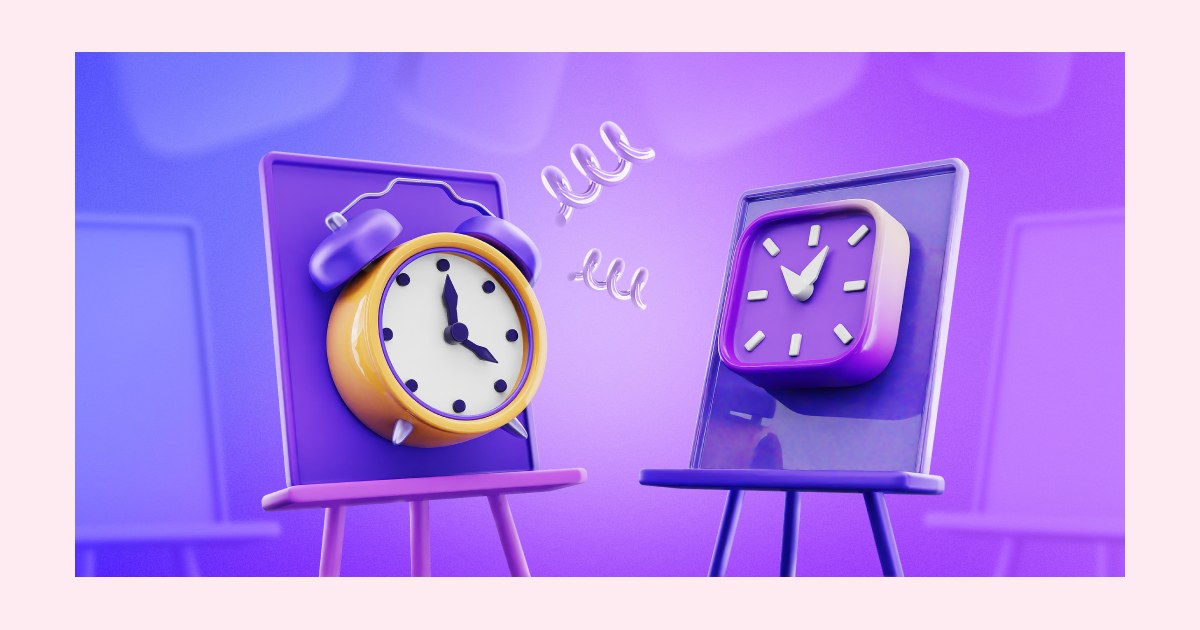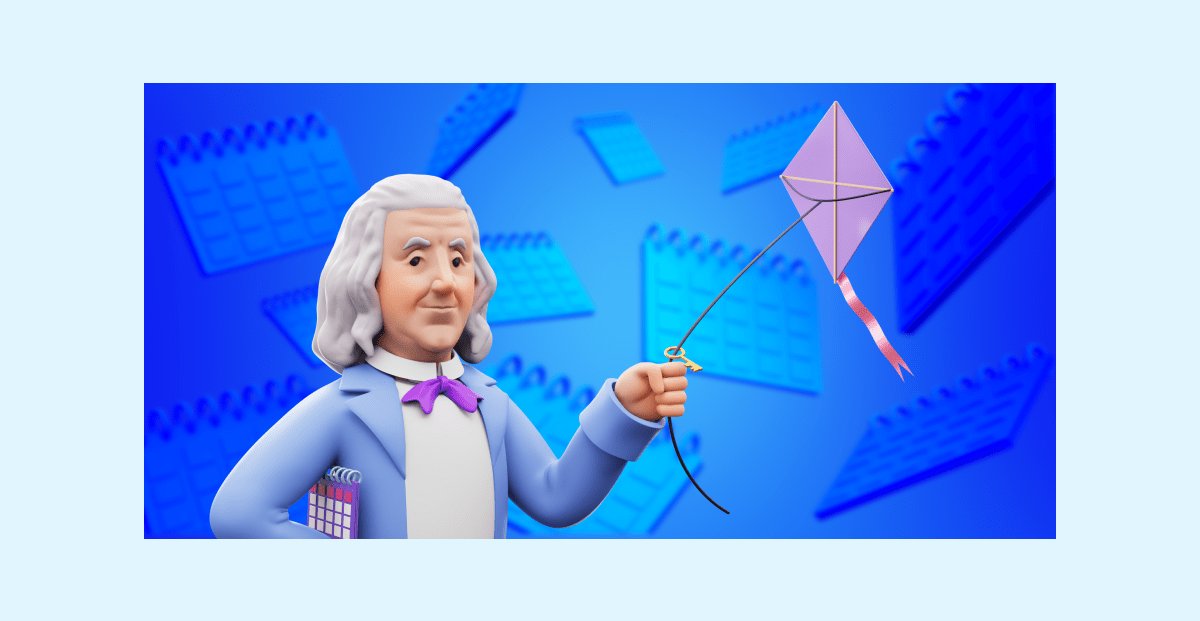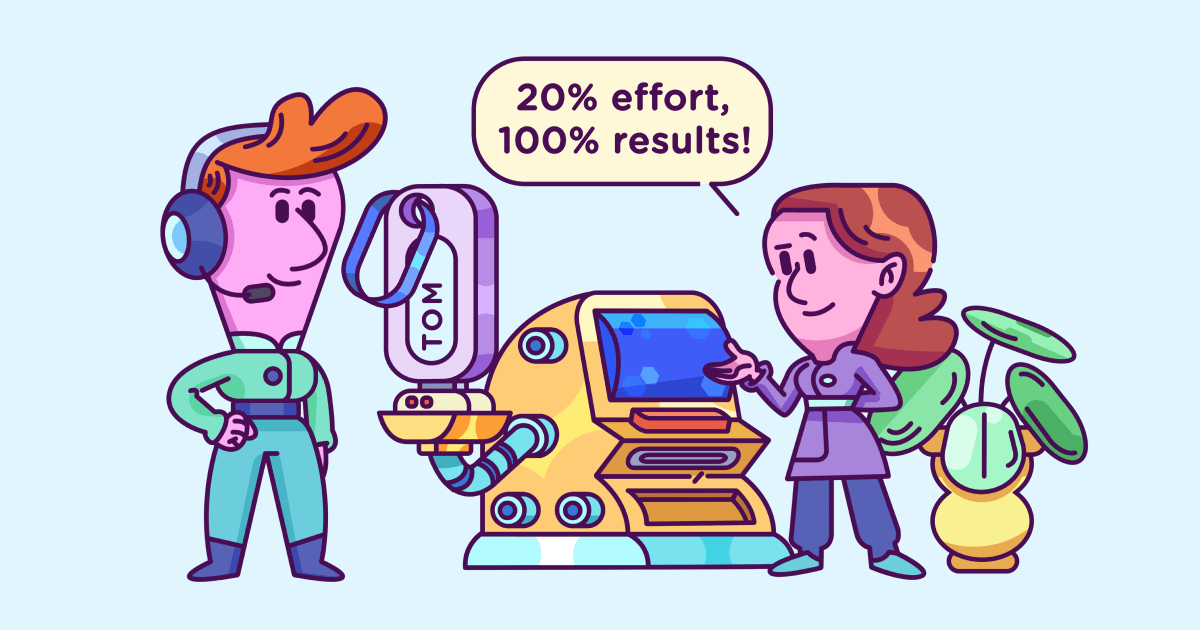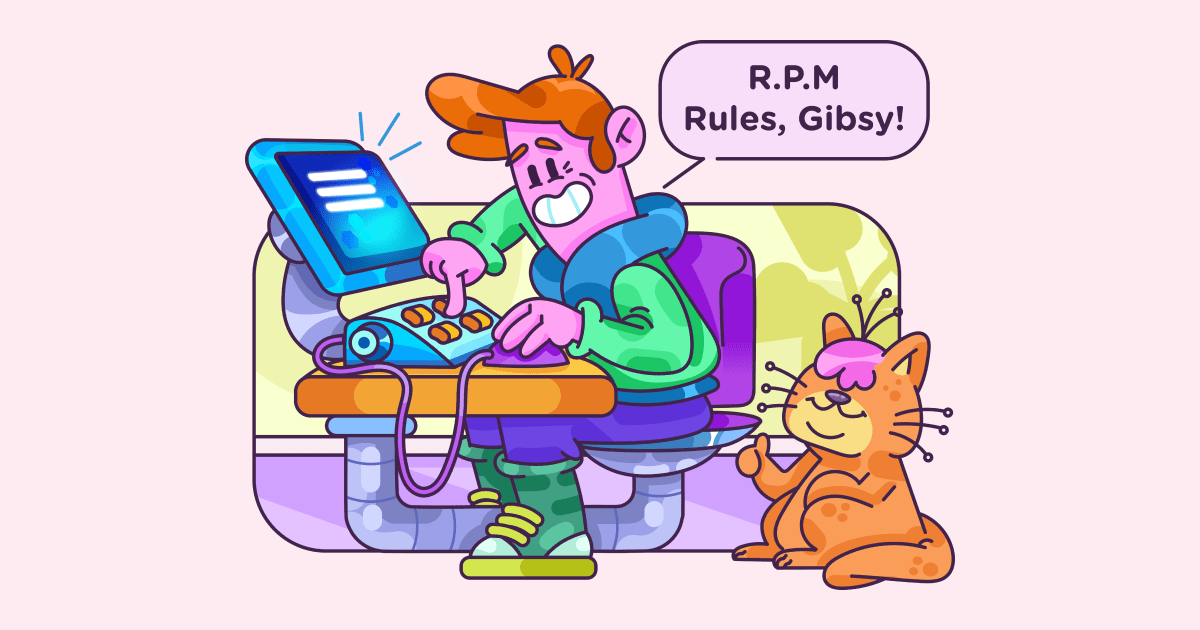10 Productivity exercises for body and mind
Last updated on: June 13, 2022
Learning new things helps the brain form new connections and neurons. These connections get stronger the more you learn. So, each time you discover new information, your brain is lifting little weights. This training keeps your mind sharp, improves your focus, and boosts your productivity.
Now, apart from training your brain, keeping your body active also plays an important role in overall productivity. Many studies, such as this one, have shown that on the days when they exercise, employees are in a better mood, more productive, and more focused at work.
In this blog post, we’ll show you some ideas on how to strengthen your productivity by activating your brain and moving your body.
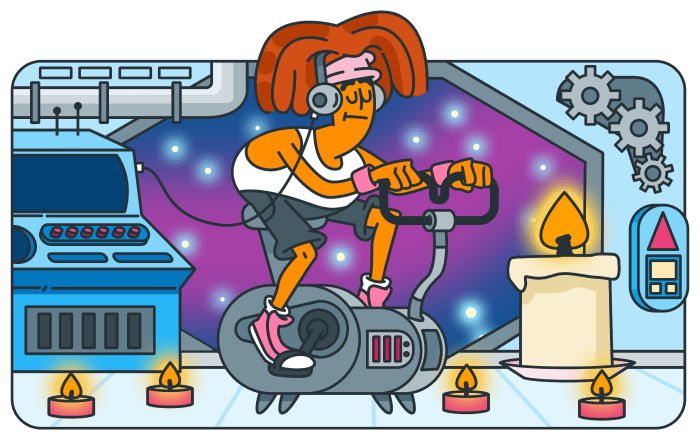
Table of Contents
Brain exercises that improve productivity
The brain is flexible and can change at any age. This ability is called brain plasticity. To keep your mind sharp regardless of your age, you need to train your brain regularly. Therefore, you’ll enhance your focus and effectiveness at work. We bring you some brain exercises that can help you get things done.
Listening to music
According to the study published by the National Center for Biotechnology Information (NCBI), music enhances productivity and cognitive performance. Besides, there’s a link between music tempo and productivity. Participants in this study worked best when listening to power songs such as “I Wanna Dance with Somebody” by Whitney Houston and “I Will Survive” by Diana Ross.
So, what music should you choose during your working hours? This depends on the nature of your daily tasks.
Tune in Van Morrison’s “Brown Eyed Girl” or any other three-chord structure songs whenever you need to deal with repetitive tasks. But, opt for some instrumental playlists when you need to engage in deep work. Music can surely affect your productivity and help you avoid distractions around you.
Meditating
How can meditation impact your productivity? Well, if you meditate frequently, you’ll be able to calm your mind and manage your emotional impulses. Furthermore, meditation will help you refocus your attention, therefore upgrade your productivity.
If you’ve never tried meditation, there are many ways to do that. Here are some ideas you can give a shot even at work:
- Count your breaths. Just sit comfortably and breathe in and out. This routine should last for five minutes, during which you have to breathe deeply and count your breaths.
- Guided meditation. Relax and listen carefully as a narrator explains how the mind behaves during meditation. You’ll also need to pay attention to your breathing. The guided meditation videos usually contain many gorgeous nature images, so you don’t have to close your eyes if you don’t want to.
Napping
If meditation isn’t your cup of tea, napping might be a better option for you. And speaking of tea, you can treat yourself to a cup of chamomile or lavender tea before visiting dreamland.
As stated in the article by Harvard Health Publishing, a nap can make you productive both at work and at home. Another benefit of napping is that it improves your problem-solving skills. Robert Stickgold, a Harvard sleep researcher, has discovered that napping improves your ability to distinguish important information from irrelevant details.
But, it’s crucial not to sleep for too long. Ideally, you should nap for 20 to 30 minutes. If you sleep more than 30 minutes, you can experience sleep inertia – a feeling of tiredness after waking up. Besides, try sleeping in a quiet, dark, and cool room.
Learning a new hobby
The study published in the Sage Journals indicates that older adults who engaged in new cognitive activities had a better memory. So, learning new things by picking a new hobby is an excellent way to train your brain.
If you enjoy learning languages, go for it. On the other hand, if music is your passion, how about playing a new instrument? Choose what you enjoy the most.
Now, here’s another handy tip if you opt for learning languages. For instance, let’s say you want to upgrade your knowledge of Spanish, and you’re taking classes two times a week. To track your progress while learning Spanish, you can write down all your language activities by using a productivity tracker. Therefore, by looking at your tracked time entries, you’ll know how much time you need to finish your homework or prepare for a test.
Be sure that your brain doesn’t like being in a comfort zone. Thus, whatever hobby you choose, always strive for upgrading your skill regularly. This routine will help you stimulate your brain.
Even if you don’t have time for a hobby, you should keep your brain active by reading more. According to one study, reading a novel can enhance brain function on several levels.
Playing brain games
One of the benefits of brain games is that they trigger various parts of the brain that are in charge of functions such as short-term memory, attention, and information processing. When it comes to brain games, you should challenge yourself by playing a more complex game each time you notice an improvement in your performance.
We can divide brain games into word games and logic games, like jigsaw puzzles and mazes. And, the brain uses each hemisphere for various functions. So, in right-handed people, the left side of the brain controls language and reasoning skills. Therefore, if you’re right-handed, you’ll use word games to improve the left hemisphere functions. At the same time, you’ll use mazes and puzzles to boost your right hemisphere functions, thus enhancing your visual skills and orientation.
Dr. Gary Small is a professor of psychiatry and aging and an author of the book 2 Weeks to a Younger Brain. Below you can find brain games that Dr. Small suggests for both left and right hemispheres. These games are suitable for three levels of experience: beginners, intermediate level, and advanced.
Beginner exercises
Left brain: changing words
You start with the word “Wall” and need to finish with the word “Firm”. With each new word, you are only allowed to change one letter, and each new word must be a proper word.
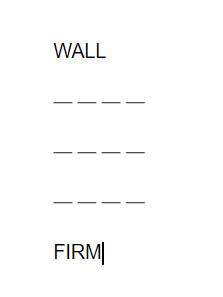
Right brain: jigsaw brain break
Your task is to find the piece that fits the puzzle.
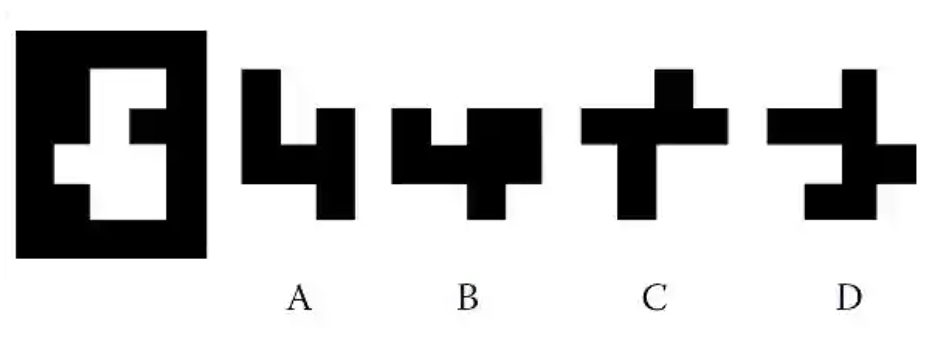
Intermediate exercises
Left brain: finding colors
The names of the colors are mixed up and your job is to find four color names by rearranging all the letters. Be careful, only one of these colors is a primary color.
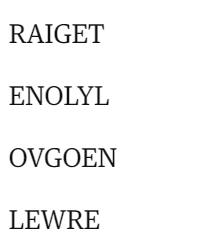
Right brain: continuous line
The following exercise improves visual-spatial skills but also tests your ability to divide attention between mental tasks.
Your job is to draw one line starting from the number 1. Then, you need to connect number 1 with the letter A, A with the number 2, number 2 with the letter B, B with number 3, and so on. You’re done when there are no more numeric or alphabetical letters left to connect.
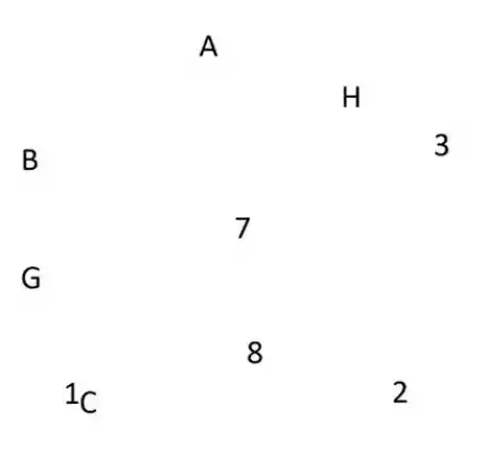
Advanced exercises
For the next two brainteasers, you’ll need to simultaneously use both parts of your brain.
Letter scramble
You need to brainstorm as many words as you can from the following word set: OGEUNRY.
Each word needs to have at least two or three letters.
Finicky Frank
Here’s Dr. Small’s explanation for this exercise: “Frank has very eccentric tastes. He’s a fan of football but hates rugby; loves beer but hates ale; drives a Ferrari but wouldn’t be caught dead in a Lamborghini. Based on Frank’s finicky tastes, would he prefer skiing or cycling?”
If you’d like to check your answers once you’re done with these exercises, you can find them here.
Apart from these mind games, you can try some word games with your friends and colleagues. For example, you can test your verbal intelligence by playing Scrabble during your lunch break at work. There’s an online version of this game if that’s more convenient for you.
Activating all five senses
Throughout our life, we use our sight to guide us while doing various activities and moving through some space. Eventually, our visual system creates a “spatial map” of our worlds in several parts of the brain. And even though other senses are also connected with this map, we rarely use any except sight.
But, what happens if we try using only non-visual senses, to navigate through places? This activity is what the authors of the book Keep your brain alive, call Neurobic exercise. In the article published on the authors’ official website, they briefly explain how the Neurobic exercise works. As an example, they describe a girl named Jane, who’s returning home from work. She needs to unlock the apartment with her eyes closed. To do so, Jane uses a sense of touch and a sense of smell, too. For example, she avoids the sharp edge of her coffee table because she feels the smell of birthday roses, which are on the table.
So, what can we learn from Jane’s story? How do non-visual senses activate the brain? When you do things differently and rely on all senses except for sight, your brain engages new or rarely used brain pathways. These new activities strengthen the synapses between nerve cells. Therefore, brain cells start producing more brain growth molecules, such as neurotrophins. Finally, neurotrophins are important because they maintain the health of the adult brain.
Whenever you want to challenge your brain, try stimulating all senses. Many studies show that using all your senses improves your mind and makes it stronger. Some of the best activities that stimulate all senses are traveling, baking cookies, hiking, trying new foods, and gardening.
Physical exercises that improve productivity
Physical exercises are crucial for your productivity as well since they benefit your brainpower. Wendy Suzuki, the neuroscientist, highlighted these benefits in her speech for TedWomen 2017. She claims that exercise even has immediate effects on your brain. Wendy points out that a single workout is proven to:
Upgrade levels of neurotransmitters such as dopamine, serotonin, and noradrenaline. Thus, you’ll be in a much better mood after working out.
Increase your ability to focus attention, which lasts for at least two hours.
Enhance your reaction times.
So, how often should you exercise to keep your brain fresh? Wendy says that working out three to four times a week for a minimum of 30 minutes is recommended. But, you can always do more if you’re into it. Plus, remember to include cardio sessions into your routine.
Whatever activity you choose, be sure to stay hydrated. Water increases your brain’s gray matter, which results in 14% in productivity. Apart from water, there are other types of drinks and food that do wonders for your brain. These so-called superfoods can boost your productivity, too.
Now, here are some of the most effective exercises that will help you get things done more effectively.
Running
As we can learn from the West Michigan University experiment, going for a half-an-hour run increases the “cortical flicker frequency” limit. Or, simply put, running helps you better process information. In addition, running has positive effects on forming new cells in the hippocampus, the part of the brain in charge of the learning and memory process.
If you usually feel drowsy in the morning, you should start running right after waking up. Running doesn’t even have to last long, so you’ll do fine with just 30 minutes. Of course, you can go for a run in the afternoon or in the evening, if mornings are too hectic for you.
Not a fan of running? In that case, try jumping the rope. Trust me, you’ll feel more energized even after 2-3 minutes of rope jumping.
Fitness trainers say that both running and jumping rope are great cardio options. Aside from having benefits for your brainpower, these activities will help you build cardiovascular and mental health.
Dancing
You may love it or not, but dancing does miracles for your brain. According to the Stanford article, this activity “integrates several brain functions at once — kinesthetic, rational, musical, and emotional — further increasing your neural connectivity.” Not to mention that you’ll surely feel happier and energized after a dance session. Thus, focusing on work tasks will be much easier, and you’ll be more productive.
So, what about specific types of dance? For instance, researchers at North Dakota’s Minot State University discovered that Latin style dance Zumba increases some cognitive skills, like visual recognition and decision-making. If you’re passionate about dancing, be sure to give Zumba a shot.
Cycling
Another activity that can enhance your productivity is cycling. In accordance with a study from the University of Illinois, some aerobic exercises, such as cycling, can expand the hippocampus. The results of this survey show that after six months of cycling daily, the hippocampus of the participants increases by 2%, and their memory and problem-solving abilities grew up to 20%.
It’s worth mentioning that not only outdoor cycling positively impacts effectiveness, but indoor bike riding as well. A study published in the NCBI analyzed a group of healthy young men who used a stationary bike for 30 minutes at a moderate pace. They had to complete some tests before and after their cycling session. After they’ve been cycling for 30 minutes, the participants had higher scores on memory, planning, and reasoning. Plus, they completed their tests quicker than before the workout.
Aerobics
Here’s an interesting fact: low to moderate-intensity aerobic training is better for enhancing productivity than a high-intensity aerobic workout. Many studies suggest that intense exercise is linked with higher symptoms of fatigue. On the other hand, the levels of fatigue are lower in the case of low-intensity training.
In addition, when it comes to elderly people, one research highlights that aerobic workout can greatly improve hippocampal volume in older women with mild cognitive impairment (MCI). As per the findings of this study, six months of aerobic exercise is proven to be an effective way to fight cognitive decline in older women.
What should you choose when it comes to low-intensity aerobic workouts? If you prefer indoor training, try slowly pedaling on a bike or walking on a treadmill. If you’re eager to catch some sun, you can try jogging or going for a walk.
Wrapping up
To keep your productivity levels high, be sure to energize your brain regularly. Activities such as listening to music, meditating, or playing brain games are vital for boosting brainpower. It’s incredible that even taking a nap after work is beneficial for your work performance and output.
Aside from brain training, you should also incorporate some physical exercise into your daily routine. Don’t worry, you won’t have to become a triathlete overnight. Instead, try some of the sports we covered in this article and find what works for you. For some activities, working out for 30 minutes several times a week does wonder for your overall effectiveness and health.

